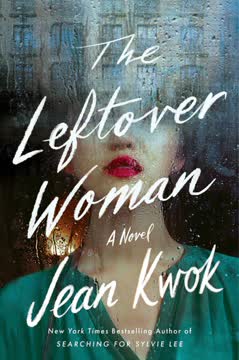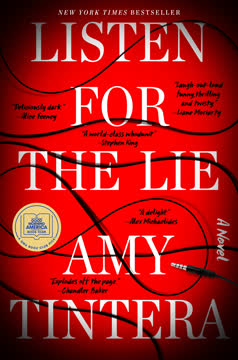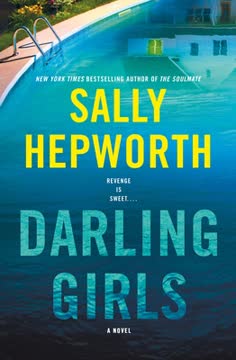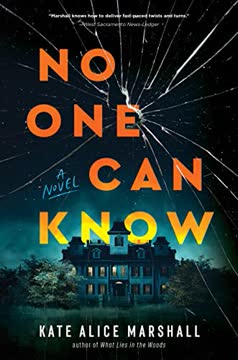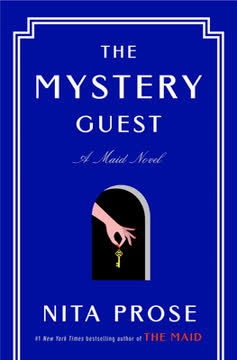Plot Summary
Prologue: Rain at the Door
The novel opens with a haunting prologue: a letter written in the aftermath of violence, filled with regret and longing. The narrator confesses to an irrevocable act, her hands forever stained, and addresses a beloved whose forgiveness she does not expect. She imagines a day when, despite all the pain and years apart, the beloved will come to her door in the rain. The hope is fragile, the desire overwhelming, and the past is a wound that cannot heal. This prologue sets the emotional tone: a story of love, loss, and the desperate hope for understanding, even if compassion is out of reach. The language is intimate, the pain palpable, and the sense of fate—of lives intertwined and marked by each other—permeates every word.
Crossing Oceans, Crossing Paths
Jasmine, a young woman from rural China, arrives in New York's Chinatown, desperate for work and haunted by her past. She is undocumented, indebted to the snakeheads who smuggled her, and burdened by memories of a family that never cherished her. In a teahouse, she unexpectedly reunites with Anthony, her childhood best friend, now changed and distant. Their encounter is fraught with unresolved pain and longing, both recognizing the other yet unable to bridge the years and betrayals. Jasmine's search for work is met with suspicion and rejection, but a chance meeting with Dawn, a bold and streetwise woman, offers her a lifeline: a job at a club called Opium. Jasmine's journey is one of survival, invisibility, and the hope that she might one day reclaim what was stolen from her.
Secrets in the Beautiful Country
Jasmine's backstory unfolds: married off at fourteen to Wen, a powerful and controlling man, she endures years of abuse and heartbreak. Her greatest wound is the loss of her daughter, taken from her at birth and sent for adoption in America because she was not a son. Jasmine discovers the truth through Wen's emails—her daughter is alive, thriving in New York, and adopted by a wealthy American couple. This revelation becomes her driving force. She escapes China, risking everything to find her child. In New York, Jasmine is isolated, struggling to survive, and forced to consider selling her only heirloom, a jade hairpin, to pay her debts. The city is cold and indifferent, but Jasmine's determination to reunite with her daughter burns fiercely, even as she is forced to hide her true self.
The Red Thread Returns
The motif of the red thread—an ancient Chinese belief that two people connected by fate are bound together—reappears as Jasmine and Anthony's relationship is explored. Their childhood friendship was deep, marked by shared secrets and a handmade red thread bracelet. Misunderstandings and family interference tore them apart, each believing the other had abandoned them. Now, in New York, their reunion is awkward and painful, old wounds reopened. Anthony is hurt by Jasmine's silence and choices; Jasmine is wary, unable to trust anyone from her past. Yet the red thread endures: Anthony still wears the bracelet she made, a silent testament to their bond. Their connection is both a source of comfort and a reminder of all that has been lost.
The Other Mother
Rebecca, editor-in-chief at a prestigious publishing house, is the adoptive mother of Fifi, Jasmine's lost daughter. Her life is outwardly perfect: wealth, status, a loving husband Brandon, and a beautiful home. Yet beneath the surface, Rebecca is plagued by insecurity—about her career, her marriage, and her ability to be a good mother. She feels threatened by Lucy, the Chinese nanny (Jasmine in disguise), who shares a special bond with Fifi. Rebecca's world is one of appearances, where failure is not tolerated and every misstep is magnified. Her marriage is strained by secrets, masks, and identity and suspicion, and her professional reputation is under siege after a scandal. Rebecca's struggle is to maintain control, to be seen as worthy, and to keep her family intact, even as she senses something slipping away.
Masks and Mirrors
Jasmine adopts the identity of Lucy, the nanny, to be close to her daughter. She lives a double life: by day, the quiet, dutiful caregiver; by night, a cocktail waitress at Opium, navigating the dangers of the club and the predations of men. The club is a world of masks and mirrors, where women weaponize their beauty for survival. Jasmine is forced to confront her own shame and the commodification of her body, all for the chance to secure a future with her child. Meanwhile, Rebecca is blind to the true identity of her nanny, seeing only what she expects. Both women are trapped by the roles they play, longing to be seen for who they truly are. The motif of mirrors recurs: self-portraits, reflections, and the struggle to reconcile inner and outer selves.
The Price of Survival
Jasmine's debt to the snakeheads looms over her, threatening to force her into prostitution if she cannot pay. The club, Opium, is run by Aunt Glory and her daughter Lily, both hardened by the realities of survival. Jasmine is drawn into a world of exploitation, where every relationship is transactional and trust is scarce. She befriends Dawn, who becomes both ally and cautionary tale. Jasmine's refusal to do "Champagne Room" work (sex work) is tested as her desperation grows. The club is a microcosm of the immigrant experience: solidarity and betrayal, hope and despair. Jasmine's choices are shaped by necessity, and each compromise brings her closer to losing herself. The cost of survival is high, and the line between victim and perpetrator blurs.
The Club and the Classroom
Rebecca's professional life collides with her personal one as she vies for a career-saving book deal, while Brandon, her husband, is drawn into the orbit of Opium through his Chinese connections. The club and the classroom become arenas for ambition, seduction, and betrayal. Brandon's fluency in Chinese and his ambiguous relationship with Lucy/Jasmine create tension and suspicion. Rebecca's insecurities are heightened by her sense of exclusion—from her daughter's culture, from her husband's world, and from the inner lives of those around her. The club is a place of temptation and danger, while the classroom is a site of debate and moral ambiguity. Both are stages where identities are performed and tested.
Ties That Bind
The web of relationships tightens: Jasmine's secret is at risk as Brandon discovers her working at Opium. He is drawn into her confidence, blackmailed into silence by the threat of scandal. Wen, Jasmine's abusive husband, tracks her to New York, using his connections and the criminal underworld to close in. The threat of violence escalates, and Jasmine's plan to take Fifi and run becomes urgent. Rebecca's suspicions about Lucy grow, fueled by jealousy and fear. The ties of family—biological, adoptive, chosen—are tested by loyalty, betrayal, and the desire to possess. The red thread motif recurs, now tangled and frayed, as each character is forced to choose where their true allegiance lies.
The Daughter's Shadow
Fifi, the child at the center of the storm, is loved fiercely by both mothers. She is bright, sensitive, and caught between worlds—Chinese and American, adopted and biological. Her questions about her origins, her sense of not quite belonging, and her longing for connection drive the emotional heart of the story. Fifi's nightmares, her fear of the "ghost woman," and her attachment to Lucy/Jasmine reveal the deep wounds of abandonment and the complexities of identity. The adults' struggles play out in the shadows of her childhood, shaping her sense of self and her future. Fifi's voice, though often unheard, is the silent plea for love and understanding that animates the novel.
Collision Course
The narrative hurtles toward its climax as all secrets are forced into the open. Wen arrives, intent on reclaiming Jasmine and Fifi, threatening violence and blackmail. The climax: home invasion and violence in the Whitneys' home is explosive: Wen brandishes a gun, Brandon is chained, and Rebecca is wounded protecting Lucy. In a moment of desperate courage, Lucy/Jasmine kills Wen to save the family. The aftermath is chaos—police, blood, and the shattering of all illusions. Each character is forced to confront the consequences of their choices: Rebecca claims responsibility to protect Lucy, Brandon's past is exposed, and Jasmine must decide whether to stay or go. The cost of survival, love, and truth is paid in blood.
The Trap Springs
In the wake of violence, the characters must reckon with what remains. Lucy/Jasmine, knowing she cannot stay without endangering Fifi, chooses to leave, entrusting her daughter to Rebecca and Brandon. Rebecca, transformed by pain and empathy, promises to honor Jasmine's love and heritage in raising Fifi. The boundaries between mother and mother blur, united by sacrifice and the desire for the child's happiness. Anthony, Jasmine's childhood friend and now beloved, offers her hope for a future beyond survival. The trap that ensnared them all—of secrets, shame, and longing—has been sprung, and the survivors must find a way to live with what they have done and lost.
Blood and Betrayal
The story's denouement is one of reckoning and tentative forgiveness. Rebecca's career is destroyed by scandal, but she finds new purpose in independence and honesty. Brandon's secrets are laid bare, but his love for his family endures. Jasmine, exiled by necessity, begins to reclaim her identity and agency, choosing love and self-discovery over fear. Fifi, now grown, reflects on her complex heritage and the love of both mothers. The wounds of betrayal and violence are deep, but the possibility of healing emerges. The red thread, though stretched and tested, is not broken.
The Choice and the Cost
The final chapters explore the meaning of motherhood—not as possession, but as sacrifice and letting go. Jasmine's decision to leave Fifi with Rebecca is an act of love, as is Rebecca's promise to honor Jasmine's place in Fifi's life. The cost of love is high: loss, pain, and the willingness to relinquish control. The characters are changed by what they have endured, their identities reshaped by suffering and compassion. The story ends not with triumph, but with the hard-won wisdom that love is not ownership, and that true belonging is found in acceptance and understanding.
Epilogue: Reunion
Years after the events of the novel, Fifi—now Fiona, a young woman—returns to seek out Jasmine, her birth mother. The past is not forgotten, but the wounds have begun to heal. Fiona is shaped by both her mothers, carrying the legacy of love, sacrifice, and resilience. Jasmine, at last, is able to welcome her daughter not as a possession, but as a person with her own choices and future. The red thread endures, connecting them across time and distance. The story closes with the hope of reunion, forgiveness, and the possibility of new beginnings.
Characters
Jasmine (Lucy/Luli)
Jasmine is the emotional core of the novel—a woman forged by hardship, betrayal, and the unyielding love for her lost daughter. Born unwanted in rural China, she is raised by relatives who never let her forget her status as an outsider. Married off young to Wen, she endures abuse and the ultimate loss: her daughter, taken from her at birth and sent for adoption in America. Jasmine's journey is one of survival and transformation. She is resourceful, determined, and willing to sacrifice everything for the chance to reclaim her child. As Lucy, the nanny, she lives a double life, hiding her true identity while navigating the dangers of undocumented life and the exploitative world of Opium. Jasmine's psychological complexity is profound: she is haunted by shame, driven by hope, and ultimately capable of both violence and selfless love. Her development is marked by the gradual reclamation of agency, the willingness to let go, and the embrace of her own worth beyond the roles imposed on her.
Rebecca Whitney
Rebecca is the adoptive mother of Fifi and a high-powered editor, living under the shadow of her legendary father and the weight of her own expectations. Outwardly successful, she is plagued by self-doubt, the fear of failure, and the sense that she is never enough—as a mother, wife, or professional. Her relationship with Fifi is loving but fraught, complicated by her inability to fully bridge the cultural and emotional gap between them. Rebecca's marriage to Brandon is strained by secrets and the intrusion of Lucy/Jasmine, whom she both resents and unconsciously admires. Psychologically, Rebecca is driven by the need for control and validation, yet her greatest growth comes through vulnerability and the willingness to see others—especially Lucy—as fully human. Her arc is one of humility, empathy, and the painful recognition that love sometimes means letting go.
Fifi (Fiona)
Fifi is the child at the center of the novel's emotional storm. Adopted from China, she is cherished by Rebecca and Brandon, yet feels the subtle ache of difference and longing for her origins. Sensitive and bright, Fifi is caught between worlds—her Chinese heritage and American upbringing, her two mothers, and the secrets that swirl around her. Her nightmares, questions, and acts of defiance reveal a deep need for belonging and truth. As she grows, Fifi becomes a symbol of hope and reconciliation, embodying the possibility of healing and the enduring power of love. Her adult self, Fiona, reflects on her complex identity with wisdom and grace, honoring both her mothers and the journey that shaped her.
Brandon Whitney
Brandon is Rebecca's husband, a polyglot professor with a deep connection to China. He is loving and attentive, yet his own secrets and ambivalence create tension in the marriage. Brandon's fluency in Chinese and his rapport with Lucy/Jasmine make him both bridge and barrier between the worlds of his wife and his daughter's heritage. His involvement with Opium and his past drug conviction complicate his role as protector and provider. Psychologically, Brandon is torn between loyalty, guilt, and the desire to do right by all parties. His development is marked by the painful recognition of his own limitations and the necessity of honesty.
Wen
Wen is Jasmine's former husband, a man shaped by the pressures of tradition, patriarchy, and personal ambition. He is both victim and perpetrator—capable of tenderness and cruelty, love and violence. Wen's actions are driven by the desire for control, the need to save face, and the belief that he is acting for the greater good. His betrayal of Jasmine—selling their daughter, orchestrating her adoption, and pursuing her across continents—makes him the novel's primary antagonist. Yet Wen is not a caricature; his motivations are rooted in cultural and personal trauma. His ultimate act of violence is both a culmination of his flaws and a catalyst for the story's resolution.
Anthony
Anthony is Jasmine's childhood best friend, the boy she trusted above all others. Their bond, symbolized by the red thread bracelet, is a touchstone throughout the novel. Anthony is kind, steadfast, and wounded by Jasmine's choices and the forces that separated them. In New York, he becomes a source of support and, ultimately, love. His own journey is one of patience, forgiveness, and the willingness to wait for Jasmine to reclaim herself. Anthony represents the possibility of a future unburdened by shame and fear.
Dawn
Dawn is a fellow cocktail waitress at Opium, streetwise and vulnerable. She becomes Jasmine's friend and ally, offering both practical support and a cautionary example. Dawn's own dreams and disappointments reflect the broader struggles of immigrant women in precarious circumstances. Her relationship with Jasmine is one of solidarity, marked by moments of betrayal and redemption. Dawn's arc is a testament to resilience and the longing for a life beyond survival.
Aunt Glory and Lily
Aunt Glory is the formidable owner of Opium, a woman hardened by necessity and ambition. She rules the club with an iron fist, demanding loyalty and performance from her staff. Her daughter Lily, forced to start at the bottom, is both victim and enforcer, resenting Jasmine's presence and success. Their relationship is fraught with expectation, disappointment, and the desire for approval. Both women embody the complexities of female power in a patriarchal world, and their interactions with Jasmine highlight the costs of survival and the limits of solidarity.
Simone
Simone is Rebecca's boss, a Black woman at the top of a white-dominated industry. She is both supportive and exacting, holding Rebecca to high standards and serving as a barometer of success and failure. Simone's presence underscores the pressures faced by women—especially women of color—in positions of authority. Her relationship with Rebecca is one of mentorship, challenge, and, ultimately, disappointment.
Mason
Mason is Rebecca's professional rival and former lover, a man whose ambition and cunning mirror her own. He is both adversary and confidant, capable of empathy and betrayal. Mason's role in the Frankfurt scandal and the subsequent blackmail plot make him a catalyst for Rebecca's downfall and transformation. His psychological complexity lies in his recognition of shared ambition and the willingness to exploit weakness.
Plot Devices
Dual Narratives and Shifting Perspectives
The novel employs a dual narrative structure, alternating between Jasmine and Rebecca, with occasional chapters from other perspectives. This device allows for a rich exploration of parallel lives: two women, both mothers, both outsiders in their own ways, navigating the treacherous terrain of love, loss, and ambition. The shifting perspectives create dramatic irony, as the reader is privy to secrets unknown to the characters, heightening tension and empathy. The convergence of their stories is inevitable, and the structure underscores the themes of identity, belonging, and the costs of survival.
The Red Thread Motif
The red thread, an ancient Chinese symbol of destined connection, recurs throughout the novel as a literal bracelet and a metaphor for the bonds that endure despite time, distance, and betrayal. It links Jasmine and Anthony, mother and daughter, and the web of relationships that define the story. The motif is used to explore questions of fate versus choice, the possibility of redemption, and the enduring power of love.
Secrets, Masks, and Identity
The novel is driven by secrets: Jasmine's true identity, Rebecca's professional scandal, Brandon's past, and the hidden histories of every character. Masks—literal and figurative—are worn for survival, performance, and protection. The tension between appearance and reality is a constant source of conflict and revelation. The search for identity—personal, cultural, maternal—is at the heart of every character's journey.
Foreshadowing and Symbolism
Objects and images recur as symbols: the jade hairpin (heritage, sacrifice), mirrors and self-portraits (the struggle to see and be seen), the club Opium (exploitation and escape), and the haunted doll Henrietta (the uncanny, the child's fear of abandonment). Foreshadowing is used to build suspense, particularly in the prologue and the recurring sense of being watched or pursued. The motifs of water, rain, and thresholds signal moments of transition and revelation.
The Climax: Home Invasion and Violence
The narrative builds to a violent confrontation in the Whitneys' home, where all secrets are exposed and the characters are forced to choose between self-preservation and sacrifice. The use of the gun, the handcuffs, and the destruction of the doll are loaded with symbolic weight. The aftermath is a reckoning: who will claim responsibility, who will protect whom, and what will be lost in the process.
Analysis
Jean Kwok's The Leftover Woman is a powerful meditation on motherhood, identity, and the immigrant experience, told through the intertwined lives of two women on opposite sides of privilege and loss. The novel interrogates the meaning of family—biological, adoptive, and chosen—and the lengths to which a mother will go to protect her child. Through its dual narrative, the story explores the costs of survival in a world that commodifies women's bodies and labor, the corrosive effects of secrets and shame, and the possibility of redemption through empathy and sacrifice. The red thread motif, drawn from Chinese folklore, serves as a reminder that our lives are bound by invisible ties of fate, love, and longing. The novel is unflinching in its portrayal of violence, exploitation, and the psychological scars of abandonment, yet it is ultimately hopeful: healing is possible, not through possession or erasure, but through the hard work of seeing and honoring each other's pain. In a world of masks and mirrors, The Leftover Woman insists on the necessity of truth, the courage to let go, and the enduring power of love to bridge even the deepest divides.
Last updated:
Review Summary
The Leftover Woman is a compelling novel exploring themes of motherhood, immigration, and cultural identity. Reviews praise Kwok's nuanced portrayal of two women from different backgrounds whose lives intersect through adoption. The story delves into China's One Child Policy and its consequences. While some readers found the pacing slow and characters stereotypical, many appreciated the emotional depth and thought-provoking narrative. The book's twist and ending received mixed reactions, but overall, it was considered a powerful and engaging read.
Similar Books
Download PDF
Download EPUB
.epub digital book format is ideal for reading ebooks on phones, tablets, and e-readers.
